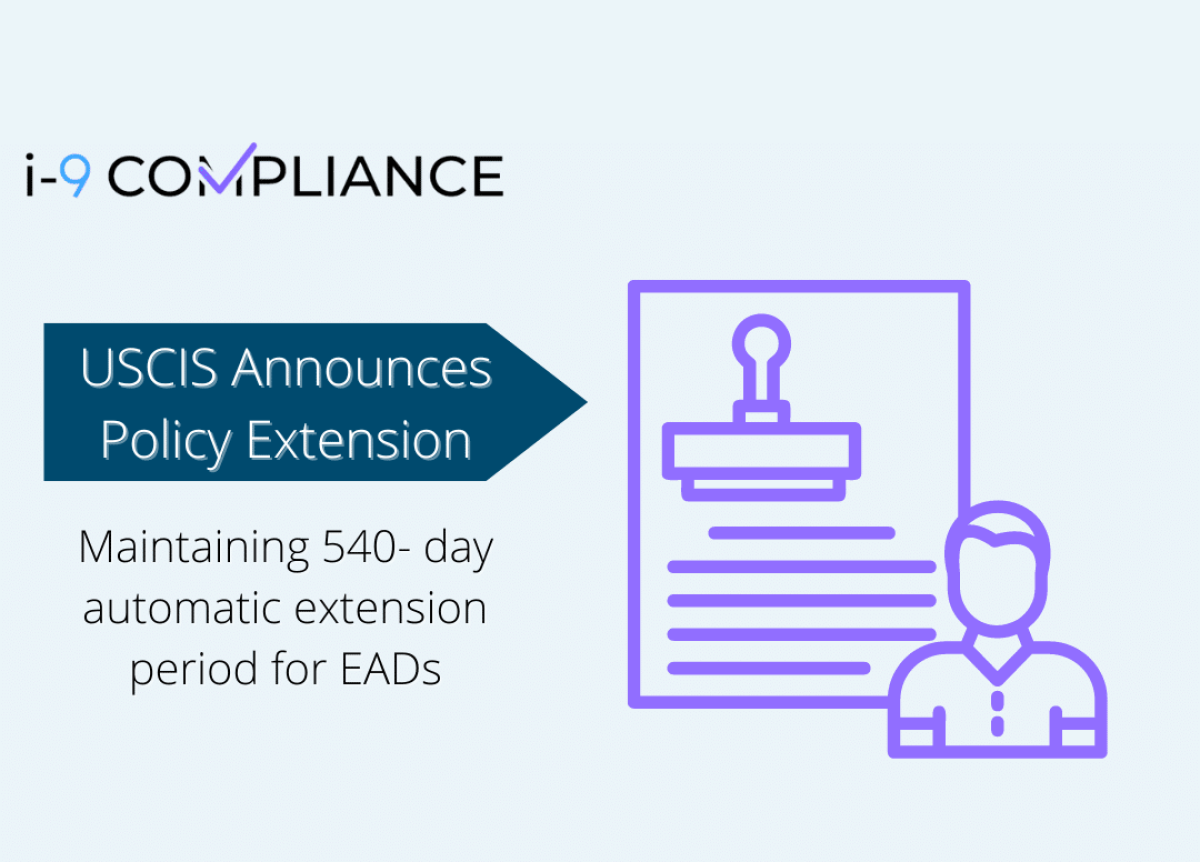
USCIS Expands Automatic Extensions to Employment Authorization
In early April, the U.S. Citizenship and Immigration Services (USCIS) announced a new rule concerning a previous policy. This rule would maintain the current extension for specific employment authorization documents (EADs) from the traditional 180-day automatic extension period to 540 days. This expansion is one of several policies the agency has implemented in recent years to drive down backlogs and extend processing times.
According to the temporary rule, automatically extended EADs that expired will receive another extension. A qualifying EAD typically receives a 180-day extension while filed on time. The USCIS uses this time to process the renewal application. However, a considerable increase in processing times appeared due to COVID-19.
During this time, many workers risked expired documents, impeding their ability to complete the employment eligibility verification (Form I-9) process. The USCIS addressed this concern by publishing the rule to increase the 180-day extension to 540 days. The agency published this rule in May 2022 and applied to documents filed on or before October 26, 2023.
However, many realized their applications for EAD renewal filed on or after October 27, 2023, would not qualify for the extension. The USCIS recognized this concern and quickly reacted. On April 4, 2024, the USCIS published a temporary final rule to expand the extension period for qualified EADs to 540 days again. Under this regulation, two categories of EADs will qualify, including the following:
1: “[A]pplicants who timely and properly filed their Form I-765 applications on or after October 27, 2023, if the application is still pending on April 8, 2024; and
2: Applicants who timely and properly file their Form I-765 application on or after April 8, 2024 and on or before September 30, 2025 (540 days after publication of this temporary final rule in the Federal Register).”
Only individuals who filed an application for renewal on time for eligible EADs may qualify for an extension. As such, the category on the current EAD must match the one listed on the Notice of Action (Form I-797C) receipt notice.
These work authorization extensions could benefit many workers and employers. However, they may encounter complications when reverifying documents during the employment eligibility verification (Form I-9). One way to ensure accurate and completely filled-out forms is by using an I-9 management system. This system provides thorough guidance through the process, convenient digital storage, and reminders of when to take action.
Learn more about automating your employment eligibility verification and ensuring compliance with I-9Compliance.
EAD Renewals, EAD Validity Period, I-9, USCIS, Validity Extended